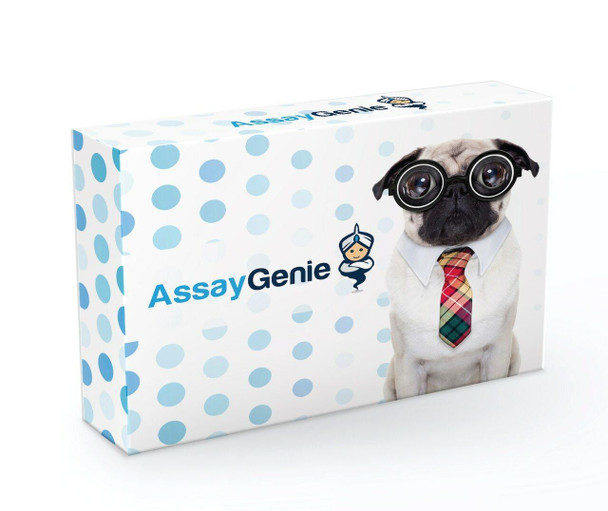CUBN Antibody (PACO05397)
- SKU:
- PACO05397
- Product Type:
- Antibody
- Reactivity:
- Human
- Host Species:
- Rabbit
- Isotype:
- IgG
- Applications:
- ELISA
- IHC
- Antibody Type:
- Polyclonal Antibody
- Conjugation:
- Unconjugated
Description
CUBN Antibody (PACO05397)
The Cubilin (CUBN) Polyclonal Antibody (PACO05397) is a valuable tool for research involving the CUBN protein, a receptor involved in the regulation of nutrient absorption and renal function. This antibody, produced in rabbits, exhibits high reactivity with human samples and has been validated for use in various applications, including Western blot and immunohistochemistry.Cubilin, a multifunctional protein found on the surface of cells, plays a crucial role in the uptake of various nutrients, such as vitamin B12 and proteins in the kidney. Dysfunction of the CUBN gene has been linked to disorders like megaloblastic anemia and proteinuria, highlighting the importance of studying its role in health and disease.
Research using the CUBN Polyclonal Antibody can provide valuable insights into the mechanisms underlying nutrient absorption and renal function, with implications for understanding conditions related to malabsorption and kidney diseases. By targeting CUBN, researchers can further explore its potential as a therapeutic target for improving the treatment of such disorders.
| Antibody Name: | CUBN Antibody (PACO05397) |
| Antibody SKU: | PACO05397 |
| Size: | 50ug |
| Host Species: | Rabbit |
| Tested Applications: | ELISA, IHC |
| Recommended Dilutions: | ELISA:1:40000, IHC:1:100-1:300 |
| Species Reactivity: | Human |
| Immunogen: | Synthesized peptide derived from the N-terminal region of human Cubilin. |
| Form: | Liquid |
| Storage Buffer: | Liquid in PBS containing 50% glycerol, 0.5% BSA and 0.02% sodium azide. |
| Purification Method: | The antibody was affinity-purified from rabbit antiserum by affinity-chromatography using epitope-specific immunogen. |
| Clonality: | Polyclonal |
| Isotype: | IgG |
| Conjugate: | Non-conjugated |
| Synonyms: | CUBN; IFCR; Cubilin; 460 kDa receptor; Intestinal intrinsic factor receptor; Intrinsic factor-cobalamin receptor; Intrinsic factor-vitamin B12 receptor |
| UniProt Protein Function: | CUBN: Cotransporter which plays a role in lipoprotein, vitamin and iron metabolism, by facilitating their uptake. Binds to ALB, MB, Kappa and lambda-light chains, TF, hemoglobin, GC, SCGB1A1, APOA1, high density lipoprotein, and the GIF-cobalamin complex. The binding of all ligands requires calcium. Serves as important transporter in several absorptive epithelia, including intestine, renal proximal tubules and embryonic yolk sac. Interaction with LRP2 mediates its trafficking throughout vesicles and facilitates the uptake of specific ligands like GC, hemoglobin, ALB, TF and SCGB1A1. Interaction with AMN controls its trafficking to the plasma membrane and facilitates endocytosis of ligands. May play an important role in the development of the peri-implantation embryo through internalization of APOA1 and cholesterol. Binds to LGALS3 at the maternal-fetal interface. Defects in CUBN are a cause of recessive hereditary megaloblastic anemia 1 (RH-MGA1); also known as MGA1 Norwegian type or Imerslund-Grasbeck syndrome (I-GS). RH-MGA1 is due to selective malabsorption of vitamin B12. Defects in vitamin B12 absorption lead to impaired function of thymidine synthase. As a consequence DNA synthesis is interrupted. Rapidly dividing cells involved in erythropoiesis are particularly affected. |
| UniProt Protein Details: | Chromosomal Location of Human Ortholog: 10p12.31 Cellular Component: Golgi apparatus; lysosomal lumen; lysosomal membrane; endoplasmic reticulum; brush border membrane; coated pit; cytosol; extrinsic to external side of plasma membrane; membrane; endocytic vesicle; apical plasma membrane; plasma membrane; endosome membrane Molecular Function:protein binding; protein homodimerization activity; transporter activity; receptor activity; calcium ion binding; cobalamin binding Biological Process: steroid metabolic process; receptor-mediated endocytosis; cholesterol metabolic process; vitamin metabolic process; cobalamin metabolic process; lipoprotein transport; cobalamin transport; tissue homeostasis; lipoprotein metabolic process; water-soluble vitamin metabolic process; vitamin D metabolic process Disease: Megaloblastic Anemia 1 |
| NCBI Summary: | Cubilin (CUBN) acts as a receptor for intrinsic factor-vitamin B12 complexes. The role of receptor is supported by the presence of 27 CUB domains. Cubulin is located within the epithelium of intestine and kidney. Mutations in CUBN may play a role in autosomal recessive megaloblastic anemia. [provided by RefSeq, Jul 2008] |
| UniProt Code: | O60494 |
| NCBI GenInfo Identifier: | 126091152 |
| NCBI Gene ID: | 8029 |
| NCBI Accession: | NP_001072.2 |
| UniProt Secondary Accession: | O60494,Q5VTA6, Q96RU9, B0YIZ4, |
| UniProt Related Accession: | O60494 |
| Molecular Weight: | 398,736 Da |
| NCBI Full Name: | cubilin |
| NCBI Synonym Full Names: | cubilin (intrinsic factor-cobalamin receptor) |
| NCBI Official Symbol: | CUBN |
| NCBI Official Synonym Symbols: | IFCR; MGA1; gp280 |
| NCBI Protein Information: | cubilin; 460 kDa receptor; cubilin precursor variant 1; cubilin precursor variant 2; intestinal intrinsic factor receptor; intrinsic factor-vitamin B12 receptor |
| UniProt Protein Name: | Cubilin |
| UniProt Synonym Protein Names: | 460 kDa receptor; Intestinal intrinsic factor receptor; Intrinsic factor-cobalamin receptor; Intrinsic factor-vitamin B12 receptor |
| Protein Family: | Cubilin |
| UniProt Gene Name: | CUBN |
| UniProt Entry Name: | CUBN_HUMAN |









